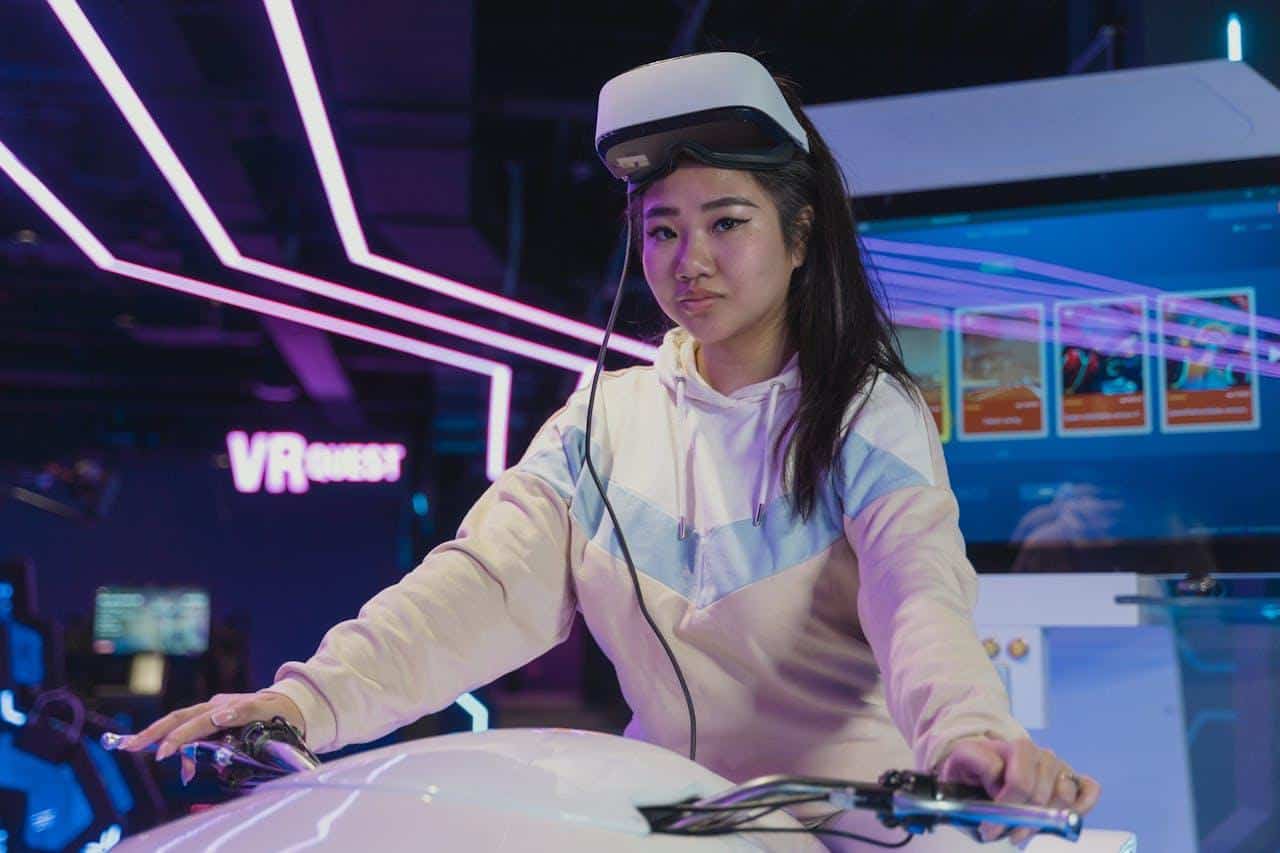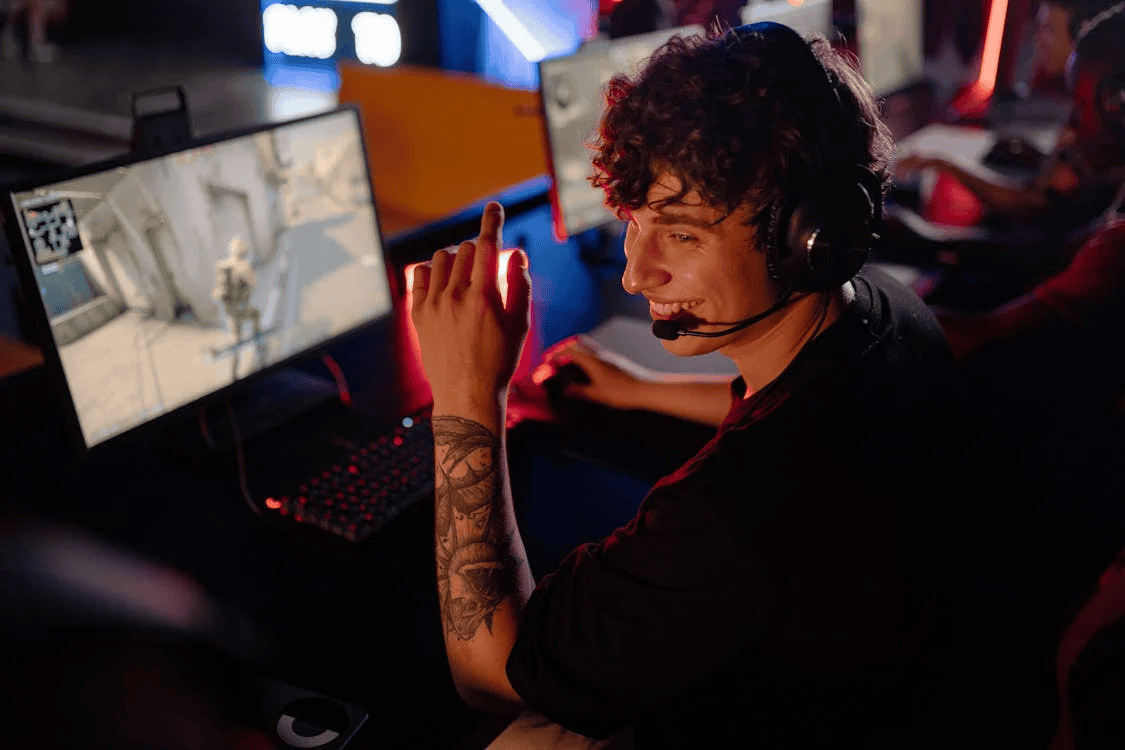Promoting a game on social media is both an art and a science. In today’s digital age, it’s no longer enough to create a great game—you also need to know how to get it in front of the right audience with the right perks.
Social media platforms are where gamers hang out, share their favorite moments, and discover new titles to play. If you’re not leveraging these spaces effectively, you could be missing out on a huge opportunity.

The potential of social media marketing
Think about it. How often have you scrolled through Instagram, TikTok, or Twitter and stumbled upon a game trailer or a funny gameplay clip? If it’s engaging enough, you’re likely to stop, watch, and maybe even click the download button.
That’s the power of social media. But getting to that point isn’t just about luck. It’s about understanding the platforms, your audience, and the type of content that resonates.
The days of posting a single screenshot and hoping for the best are over. Today’s gamers want dynamic, interactive, and visually striking content. Whether it’s a high-energy gameplay trailer or a relatable meme, your posts need to grab attention within seconds. After all, social media feeds are crowded, and standing out requires creativity and strategy.
Developing a strategic approach for your business depends on your brand
But where do you start? The key is to focus on a few core areas. First, you need to know your audience inside and out. Who are they? What do they like? What motivates them to play games?
The better you understand your players, the easier it will be to create content that appeals to them. For example, younger audiences might be drawn to TikTok’s playful, fast-paced content, while older gamers might appreciate detailed reviews or behind-the-scenes looks on YouTube.
Next, it’s crucial to tailor your approach to each social media platform. Facebook, Instagram, Twitter, YouTube, and TikTok each have unique strengths and user bases. What works on one platform might flop on another. For instance, Instagram is all about eye-catching visuals, while Twitter thrives on witty text and trending hashtags. By understanding these differences, you can maximize your reach and engagement.
Then there’s the content itself. This is where your creativity comes into play. From trailers and gameplay clips to user-generated content (UGC) and influencer collaborations, there are countless ways to showcase your game. The trick is to keep it fresh and exciting. Don’t be afraid to experiment with different formats, styles, and messages. A funny TikTok challenge might go viral, while an emotional developer diary could build a deeper connection with your audience.
Engagement comes in all forms – including paid advertising and influencer marketing
Of course, organic reach can only take you so far. Paid ads are a powerful tool for boosting visibility and targeting specific audiences. Platforms like Facebook and Instagram offer detailed targeting options that let you reach gamers based on their interests, age, location, and more.
When it comes to ads, video is king. Short, action-packed clips are particularly effective at grabbing attention and driving clicks.
Influencers are another game-changing resource. These are the personalities gamers trust to recommend new titles. Partnering with the right influencer can expose your game to thousands or even millions of potential players. And while big-name streamers and YouTubers can be pricey, smaller influencers often offer great ROI and more authentic connections with their followers.
One thing many developers overlook is the importance of community engagement. Social media isn’t just about broadcasting your message; it’s about building relationships.
Respond to comments, share user-generated content, and create opportunities for players to interact with you and each other. A strong, engaged community can turn casual fans into loyal advocates who spread the word about your game.
Monitor your performance in order to create a stronger campaign
Lastly, don’t forget to track your performance and iterate. Social media trends and algorithms are constantly changing, so it’s important to stay flexible. Use analytics tools to see what’s working and what isn’t.
Are your TikTok videos getting lots of views but low engagement? Maybe it’s time to tweak your call-to-action. Are players responding well to your Instagram Stories? Consider posting more behind-the-scenes content.

Promoting a game on social media might seem overwhelming at first, but it’s a skill you can develop with time and effort. By focusing on your audience, creating compelling content, and staying adaptable, you can turn your game into the next big thing. So, roll up your sleeves, fire up your favorite social platforms, and start sharing your game with the world. Who knows? Your next post might just go viral.
Understand Your Audience
When promoting a game on social media, understanding your audience is the cornerstone of success. Your audience is not a monolithic group; it’s a diverse community with varying interests, demographics, and motivations. Tailoring your approach to meet their specific needs is key to grabbing their attention and keeping them engaged.
Start by identifying your core audience.
Who are the people most likely to play your game? Are they hardcore gamers who follow the latest trends, or are they casual players looking for a fun way to pass the time? Narrowing down your target audience helps you create content that resonates with them.
Demographics are an essential aspect of understanding your audience. Consider factors such as age, gender, location, and language.
For instance, if your game appeals to teenagers, platforms like TikTok and Instagram are excellent choices due to their popularity with younger users. Conversely, if your target audience includes older gamers, Facebook or YouTube might be more effective.
Aside from the platform, you might want to consider rewards like CashYeah where users can do what they love – including gaming – and get rewarded for it.
Why do they play games?

Psychographics, or understanding your audience’s behavior, values, and interests, is equally important. Is it for relaxation, competition, or social interaction? A competitive gamer may be drawn to trailers highlighting intense action, while a social player might prefer content showcasing cooperative gameplay.
Social media analytics tools can provide valuable insights into your audience. Most platforms offer data on your followers, including their demographics and behavior patterns. Use this information to refine your strategies. For example, if you notice that your Instagram followers engage most with reels, focus on creating short, dynamic videos to keep them hooked.
Learn about your audience by engaging with them
Engaging directly with your audience is another effective way to learn about them. Conduct polls, ask questions, and encourage discussions in comments or direct messages. The more you interact with your community, the better you’ll understand their preferences and needs. This also fosters a sense of connection and loyalty, turning followers into advocates for your game.
Competitor research is another valuable tactic. Look at what other games in your genre are doing. What kind of content are they posting? Which platforms are they using? How are players responding? By analyzing their strategies, you can identify gaps and opportunities to differentiate your game.

Segmentation is a powerful tool in audience understanding. Not all players will respond to the same content. Divide your audience into smaller groups based on their interests or behavior. For instance, you might have one segment for players who enjoy your game’s storyline and another for those who love its multiplayer features. Tailor your content to speak directly to each group’s interests.
Create detailed profiles of hypothetical players
Personas are another way to deepen your understanding of your audience. Give them names, ages, and backstories. For example, “Sarah, a 25-year-old graphic designer, loves indie games with unique art styles” or “Mike, a 19-year-old college student, enjoys competitive shooters with his friends.” These personas help you visualize your audience and craft content that feels personal and relatable.
Timing also plays a critical role in reaching your audience. When are they most active on social media? Posting when your audience is online increases the chances of your content being seen and engaged with. Experiment with different posting schedules and use analytics to determine the optimal times.
Lastly, never underestimate the importance of feedback. Pay attention to how your audience responds to your posts. Are they liking, sharing, and commenting? Or are certain types of content falling flat? Use this feedback to adjust your strategies and continuously improve your approach.
Understanding your audience isn’t a one-time task; it’s an ongoing process. As your game evolves and your community grows, their needs and preferences may change. Stay attentive, remain flexible, and be willing to adapt. By keeping your audience at the center of your social media strategy, you’ll build a loyal and engaged player base that supports your game’s success.
Understand Each Social Media Platform
Not all platforms are created equal. Each one has unique strengths, and knowing how to leverage them can make all the difference.
Facebook is great for a broad demographic but has limited organic reach. If your target audience is active here, consider using ads to extend your reach. Post gameplay highlights, community polls, and updates to engage users.
Use Facebook Groups to foster community engagement. These groups can be a place for players to share tips, discuss gameplay, and connect with others who enjoy your game.
Instagram thrives on visually stunning content. Use vibrant game visuals, GIFs, and short reels to captivate your audience. Partnering with Instagram influencers can also boost your game’s visibility.
Experiment with carousel posts and Instagram Stories to showcase behind-the-scenes content. This can create a personal connection with your audience and build anticipation for upcoming updates or releases.
Twitter is ideal for starting conversations. Use trending hashtags to increase your game’s discoverability. Share updates, ask for player feedback, and engage with your followers to build a loyal community.
Live tweeting during gaming events or updates can also attract attention. Share witty commentary or exclusive insights to encourage retweets and likes.
YouTube
YouTube is perfect for longer content like gameplay trailers, tutorials, and developer diaries. It’s a go-to platform for gamers searching for detailed reviews and gameplay walkthroughs.
Consider hosting live streams or Q&A sessions to directly engage with your audience. Use playlists to organize your content for easy navigation, and ensure your thumbnails are eye-catching to boost click-through rates.
TikTok
TikTok is a haven for younger audiences and thrives on quirky, engaging, and short-form videos. Showcase your game’s fun side with creative challenges, trending sounds, or behind-the-scenes clips.
Collaborate with TikTok creators to participate in viral trends. This can significantly expand your reach and introduce your game to a broader audience.
Utilizing AI in Social Media Marketing for the Gaming Industry
Artificial intelligence (AI) is revolutionizing how businesses approach social media marketing, and the gaming industry is no exception. By integrating AI into your marketing strategy, you can enhance personalization, improve efficiency, and gain deeper insights into your audience. Here are some ways to leverage AI for promoting your game on social media.
AI-Powered Analytics and Insights
AI tools can analyze vast amounts of data to uncover patterns and trends that might not be immediately obvious. Social media platforms already provide analytics, but AI takes it a step further by offering predictive insights and even chat support.
AI can help identify when your audience is most active or which types of posts generate the most engagement. This allows you to optimize your posting schedule and content strategy.
Additionally, AI can segment your audience based on their behavior and preferences. This helps you tailor your content to different groups, ensuring that your posts resonate with each segment. For example, you can create targeted campaigns for players who prefer multiplayer games versus those who enjoy single-player storylines.
Content Creation and Curation
Creating fresh and engaging content is a constant challenge for marketers. AI tools can assist by generating ideas, writing captions, and even creating visuals. Platforms like Canva and Adobe’s AI tools can help you design professional-looking graphics quickly. Similarly, AI-powered writing tools can craft engaging post captions or video descriptions that align with your brand voice.
AI can also curate content by analyzing what’s trending within the gaming community. By staying on top of popular memes, challenges, and hashtags, you can create posts that tap into current conversations and attract more attention.
Personalized Interactions
Gamers expect personalized experiences, and AI chatbots can help deliver them. Chatbots powered by AI can handle customer inquiries, provide recommendations, and engage with your audience 24/7. For example, a chatbot could guide players to download your game, offer troubleshooting tips, or share details about upcoming updates.
These interactions not only enhance the user experience but also free up your team to focus on more strategic tasks. Advanced AI chatbots can even analyze conversations to identify recurring issues or frequently asked questions, helping you improve your game or marketing strategy.
Predictive Advertising
AI excels in optimizing ad campaigns by predicting which strategies will yield the best results. AI tools can analyze past performance data to determine which ad formats, visuals, and copy resonate most with your audience. This ensures that your advertising budget is spent effectively.
Dynamic ad targeting is another advantage of AI. Instead of creating one-size-fits-all ads, AI can generate personalized ads based on user behavior. For example, players who have shown interest in action games might see ads highlighting your game’s combat features, while fans of puzzle games might see content showcasing brain-teasing levels.
Sentiment Analysis
Understanding how your audience feels about your game is crucial for building a positive brand image. AI-powered sentiment analysis tools can monitor comments, reviews, and messages to gauge public opinion. If players are frustrated with a particular feature, you’ll know immediately and can address the issue before it escalates.
Sentiment analysis also helps you identify advocates who genuinely love your game. Engaging with these fans and amplifying their positive feedback can strengthen your community and attract new players.
Enhancing Influencer Collaborations
AI can help you find the perfect influencers for your game by analyzing their audience demographics, engagement rates, and content style. Instead of manually sifting through profiles, AI tools can recommend influencers who align with your target audience and campaign goals. This ensures that your collaborations deliver maximum impact.
Wrapping Up Properly Promote Games on Social Media
Promoting your game on social media requires a combination of creativity and strategy. By understanding your audience, leveraging the unique strengths of each platform, and creating engaging content, you can boost awareness and interest in your game. Remember, the key is to connect authentically with your players and keep them coming back for more.
Keep experimenting, stay consistent, and adapt to the ever-changing social media landscape. With time and effort, your game can achieve the visibility and success it deserves.


